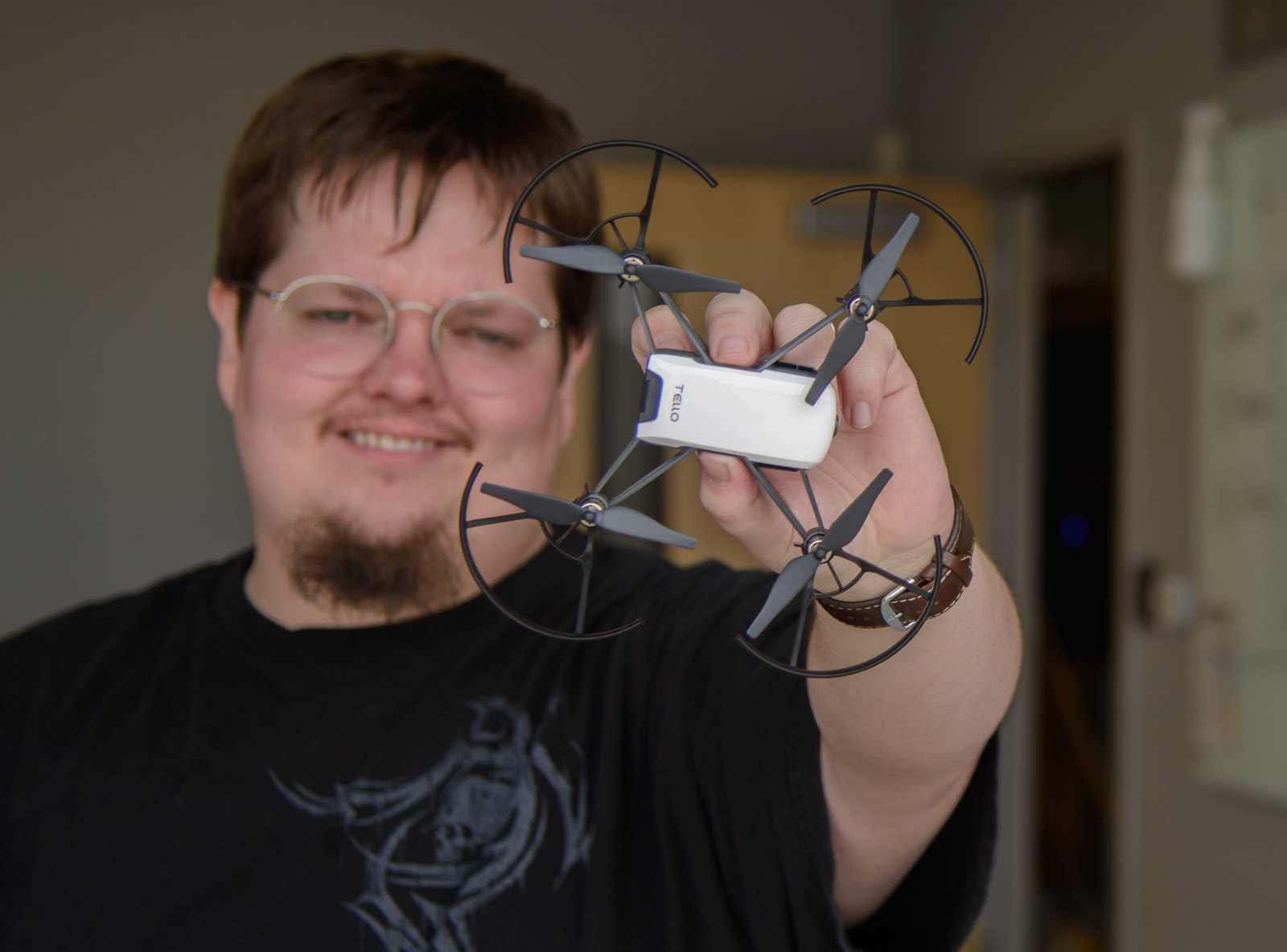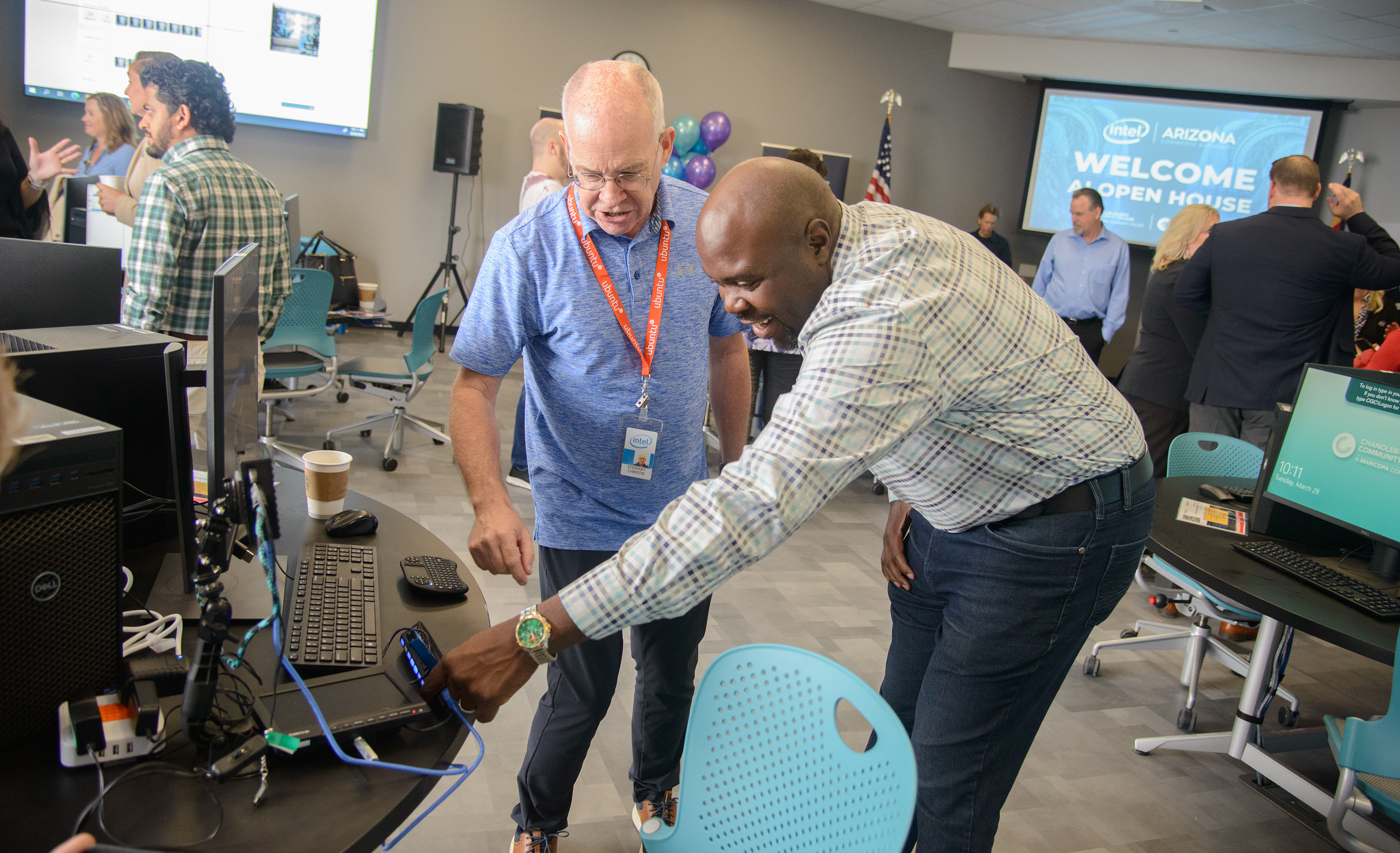Creating a College AI Incubator
Habib Matar, lead instructor of the new AI incubator lab at Chandler-Gilbert Community College in Arizona, shares advice for starting an AI lab at a university.

AI (artificial intelligence) is already playing an important role in many industries, says Habib Matar, lead instructor of the new AI incubator lab at Chandler-Gilbert Community College in the larger Maricopa County Community Colleges District in Arizona.
“Instead of having a machine do something step-by-step, we're now teaching it methods of how it can learn from examples,” Matar says. For instance, AI programs can be designed to sift through massive amounts of data and learn in ways that can have profound impacts in various fields, from business to public health.
The AI incubator lab at Chandler-Gilbert Community College is designed to support Maricopa students who are enrolled in Arizona’’s first AI certificate and degree program. The AI lab was paid for in part by a $60,000 grant by Intel Corporation. In addition, Intel recently partnered with the American Association of Community Colleges and Dell to launch the AI Incubator Network, which will select ten new community colleges to support the design and development of AI incubators.
For those interested in launching an AI incubator lab, Matar says these labs can help students in numerous ways.
Creating an AI Incubator: Build Your Curriculum With Insights From Industry

As you develop an AI program, you should make sure it aligns with current industry needs and standards.
“Talking to your local workforce about what they do and their best practices when developing your curriculum will make it more seamless when students ask, ‘Hey, what kind of job can I get out of this?’ You'll have examples,” Matar says. “Look at what technologies they use or what's cutting edge to them, because often academia can fall behind the curve in terms of the mobility of the industry.”
Remember AI Appeals to Students in Different Fields
Launching an AI incubator is not all about computer science students, though it will certainly appeal to them.
Tools and ideas to transform education. Sign up below.
The AI students at Chandler-Gilbert Community College come from a wide variety of backgrounds. “We have students who have been working in the semiconductor industry for 30 years,” Matar says. “We have traditional high school students coming through. We have students who major solely in AI. We also have CS students.”
And the program is not limited to students who specialize in technology. “I have a psychology major who is reskilling,” Matar says, noting that AI has wide applications for many industries. “Once you get to a certain point in most fields, you need to do some kind of research and that requires data. And AI has a large hand in data and how we analyze it and process it in a nontraditional way.”
Make It As Remote Friendly As Possible
Chandler-Gilbert Community College AI incubator lab features powerful computers, Dell video walls, workstations, monitors, and open-source Intel AI software tools. Mater says that going forward providing students with online access to AI computing power through some type of server or VPN will be key.
He advises those looking to start an AI incubator lab to keep remote capabilities in mind from the get-go. “Rather than having individual computers that the students access, explore the idea of hosting some kind of server for them to access from home,” he says.
Take Advantage of Existing AI Resources
For educators looking to learn more about AI and explore how to build a corresponding curriculum, Matar recommends the work of Andrew Yan-Tak Ng, co-founder of Google Brain, as well as kaggle.com, an online community of data scientists and AI programs who publish data sets and models. The site offers a variety of resources for teaching and practicing AI, and can help educators get an idea of some of the key concepts surrounding the subject that are currently being taught.
Emphasize to Student’s AI’s Real-World Applications
Recruiting students to your AI incubator and program can be all about helping them understand how applicable AI is to their lives. “I always pose to my students how exciting and emerging this field is,” Matar says. “You're not learning things that you may not see as applicable. You're learning about how to unlock your phone with your face. How does spam get filtered in your email and your text messages? There is a directness in the application of what's being taught in the field, and that's always exciting.”
Erik Ofgang is a Tech & Learning contributor. A journalist, author and educator, his work has appeared in The New York Times, the Washington Post, the Smithsonian, The Atlantic, and Associated Press. He currently teaches at Western Connecticut State University’s MFA program. While a staff writer at Connecticut Magazine he won a Society of Professional Journalism Award for his education reporting. He is interested in how humans learn and how technology can make that more effective.

